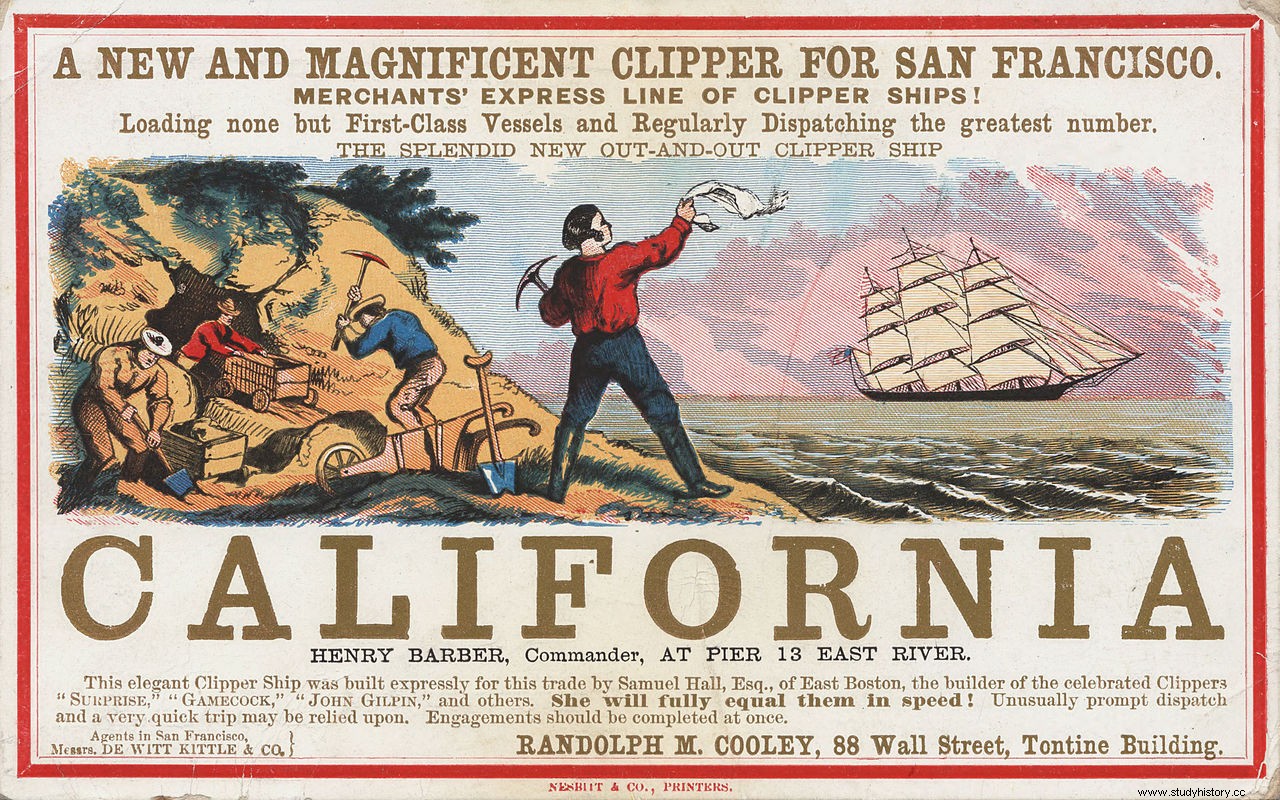In the mid-nineteenth century, the so-called “gold rush broke out in California. «. The news of the discovery of a gold nugget in Coloma (California) in 1848 spread like wildfire throughout the country and even crossed the oceans. Whether in caravans from any corner of the US or on ships from across the seas, it is estimated that the US West Coast received some 300,000 seekers of the American dream at the time. In fact, a small town like San Francisco became one of the most important cities and the nerve center of California's economic activity. But not everything was going to be congratulations, the brutal increase in population led to a rise in prices, especially in food, since animal farms and small farms were unable to meet the needs of fortune seekers. One of those products, whose price skyrocketed to the point of being almost prohibitive, was eggs, costing as much as $1 per unit. So, alternative ways had to be found to increase supply, and they were not far away... in the Fallaron Islands , a group of small islands located in the Pacific about 43 km off the coast of San Francisco.

The first European to land on these islands was the Spanish explorer Juan Rodríguez Cabrillo in 1539. Furthermore, by giving them the name of islands «Farallones » –a cliff is a rocky crag that rises above the sea near the coastline -, made very clear its rugged orography and the difficulty of establishing permanent settlements. In fact, the indigenous people of the area called them “the islands of the Dead”. These conditions had allowed those islands to become a refuge for a wide variety of species, such as seals, elephant seals, white sharks and the largest colony of seabirds on the entire Pacific coast. Among all these birds, the common guillemot stood out for its number. , also called «flying penguin «, a species of bird that nests on the rocky shores of the northern Atlantic and Pacific oceans. And, logically, such a number of birds means a large number of eggs…

Colony of guillemot on the Farallones
If since the 16th century ships had come to these islands for seal skins, in 1849 a certain Robinson and his small crew headed for the Farallones to "collect" eggs, in this case common guillemots, and do business in the face of scarce supply and high prices. Those eggs, speckled and pointed, and much larger than a hen's - almost twice as large - were going to be a hit. Such were the profits that Robinson founded the Farallon Egg Company (Farallón Egg Company or simply Egg Company ) and declared those islands of property by possession of him. The workers of the new company "fished" on the islands from mid-May to July. They went through those difficult and steep islets dressed in a kind of very wide shirts with many pockets where they placed the eggs that they stole from the nests and that, later, they would sell at a very good price in San Francisco. The average number of eggs collected in a season could reach 500,000, a staggering and dangerous number for a bird that usually only lays one egg.
It became a very lucrative business and, logically, the Egg Company had competitors, but not in other islands... but in the Farallones. Robinson kept potential rivals at bay, blockading ships and even posting men with weapons on the islands, and only allowed "harvesting" fishermen who, to earn a bonus or for their own consumption, collected the eggs that the workers of the farm. company did not risk being caught because they were located on very dangerous and difficult-to-access cliffs. Things would get complicated in 1863, when a group of Italians, led by the American David Batchelder, they headed to the islands to participate in the lucrative business. Although in the first attempt they were repelled by the men of the Company, a few days later they returned armed. After exchanging a few shots, and with one man dead on each side, Batchelder and his crew fled.
The consequences of the so-called Egg War they left Robinson's Company sole control of the islands, and David Batchelder was convicted of murder and sent to state prison. Although in 1881 the US government prohibited the collection of eggs in the Farallones, the fishermen of San Francisco maintained the custom and continued to collect bird eggs well into the 20th century. It is estimated that from 1850 to 1881 the Company sold about 14 million guillemot eggs. Today, more than a century after the ban, the guillemot population has only just begun to recover.
